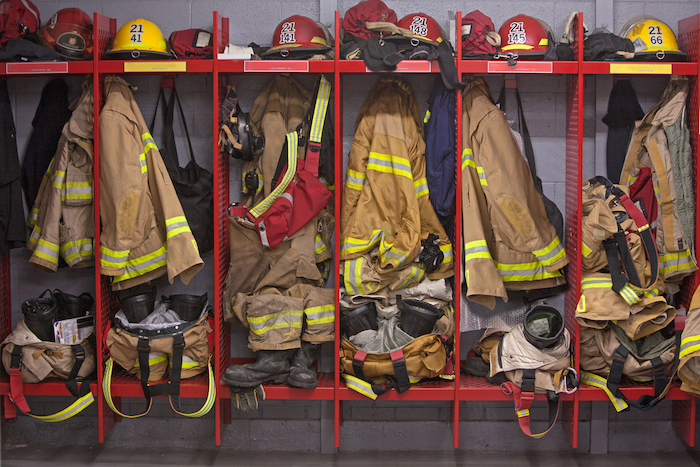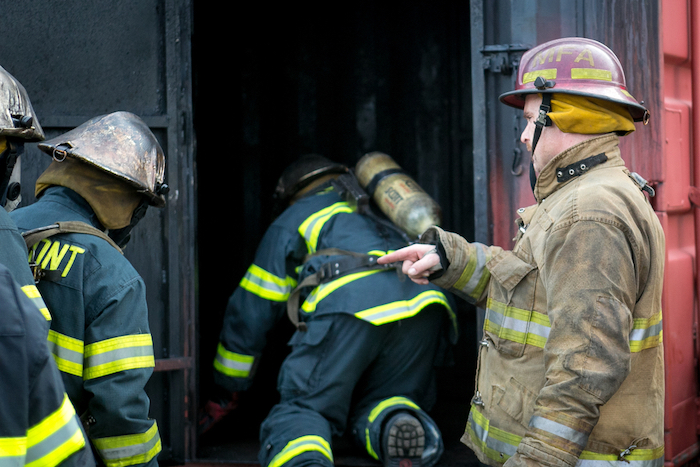More action needed to protect firefighters from cancer
- November 23, 2020
- 11:32 am


Iain Hoey
Share this content
Ground-breaking research has revealed the serious health risks to UK firefighters following exposure to toxic fire effluents, the chemicals emitted during a fire, in an independent University of Central Lancashire (UCLan) report commissioned by the Fire Brigades Union (FBU).
The work is a UK first and the latest in a growing body of international evidence suggesting an increased risk of firefighters developing cancer and other diseases. Fires produce a cocktail of toxic, irritant and carcinogenic chemicals in the form of aerosols, dusts, fibres, smoke and fumes or gases and vapours.
The report includes a summary of UCLan’s testing on-site at 18 fire stations as well as over 10,000 responses to a national firefighter survey run jointly between the FBU and UCLan.
Firefighters exposed to dangerous chemicals
Indoor air testing at a number of fire stations and training centres highlighted that UK firefighters are still being exposed to the high levels of toxic contaminants during and after a fire, as cancer-causing chemicals remain on PPE clothing, equipment, and elsewhere at the fire ground.
Test samples revealed carcinogens inside firefighters’ helmets, on PPE, and even on breathing apparatus mask filters.
More than 10,000 currently-serving firefighters were surveyed in order to better understand UK decontamination practices and the prevalence of illness, revealing:
- 4.1% of survey respondents had already been diagnosed with cancer, compared with less than 1% of the general population. Three quarters have served for at least 10 years before receiving their diagnosis. More than half were under the age of 50 and a fifth were under 40.
- Of those diagnosed, 26% have skin cancer, the most common, followed by testicular cancer (10%), head and neck cancer (4%) and Non-Hodgkin’s lymphoma (3%).
- Half of the survey respondents don’t think their fire service takes decontamination practices, including cleaning PPE and equipment, seriously.
- 1 in 5 of the survey respondents store their fire gloves in their boots, 1 in 5 store in their pockets, and 1 in 10 store in their helmet, risking the transfer of toxic contaminants directly to skin.
- Nearly half of the survey respondents felt there was a “badge of honour” attitude in the service, particularly when emerging from fires with contaminants on their PPE or face as a sign of hard work.
Scientists have created a best practice guide for fire and rescue services, putting forward a number of urgent recommendations to minimise firefighters’ exposure to toxic fire effluents. This includes:
- Every fire and rescue service must implement fully risk-assessed decontamination procedures en-route to, during and after fire incidents, and ensure all relevant staff are trained in implementing these procedures.
- Fire and rescue personnel should receive regular and up-to-date training on the harmful health effects of exposure to toxic fire effluents, and how these exposures can be reduced, minimised or eliminated.
- Firefighters should wear respiratory protective equipment at all times while firefighting, including after a fire has been extinguished, but is still ‘gassing off’.
- PPE should be clean and should be thoroughly decontaminated after every incident to avoid a build-up of toxic contaminants.
- Firefighters should shower within an hour of returning from incidents.
- Regular health screening and recording attendance at fire incidents over the course of a firefighter’s career is strongly advised and will be key to the longer-term monitoring and management of their health.

In most states in Canada and the United States, presumptive legislation recognises certain cancers as occupational diseases amongst firefighters.
In the UK, it has so far been concluded that there is not considered to be enough evidence to link occupational exposure to carcinogenic fire effluents and the higher risk of cancers. This means that, if a firefighter believes their illness is work-related, they are required to prove it – an almost impossible retroactive task.
Ahead of the report’s publication, the Environmental Audit Committee recommended that the Health and Safety Executive implement its report’s recommendations on improving firefighters’ work environments.
In response the government confirmed that it would instruct HSE to monitor the research and to ensure fire and rescue services identify risks to firefighters .
UK law requires firefighters’ personal protective equipment (PPE) to meet heat-resistance, heat transfer, and water resistance requirements, but it is not required to protect wearers from toxic gases and particulates.
This best-practice report is the first stage of ongoing research examining the link between firefighters’ exposure to toxic fire effluents and the risk of cancer and other diseases.
Matt Wrack, FBU general secretary, said:
“Firefighters risk their lives every day to keep their communities safe. But it’s clear that the risk to their health doesn’t stop when the fire has been extinguished.
“Sadly we often see serving and former firefighters suffer from cancer and other illnesses. Every firefighter knows the fear that, someday, they and their family could receive the devastating news – but we’re determined to do all we can to reduce the risk of firefighters developing these terrible diseases as a result of their job.
“There are some hard truths for fire and rescue services in this report – and far more needs to be done to protect firefighters from cancer and other illnesses. And among firefighters, there are still some myths to dispel, which is why regular and up to date training on the risk to their health is so essential.
“This research is a crucial first step to definitively proving the link between firefighting, toxic contaminants, and cancer in the UK. The Health and Safety Executive must urgently implement the recommendations to bring life-saving measures into place as soon as possible.”



